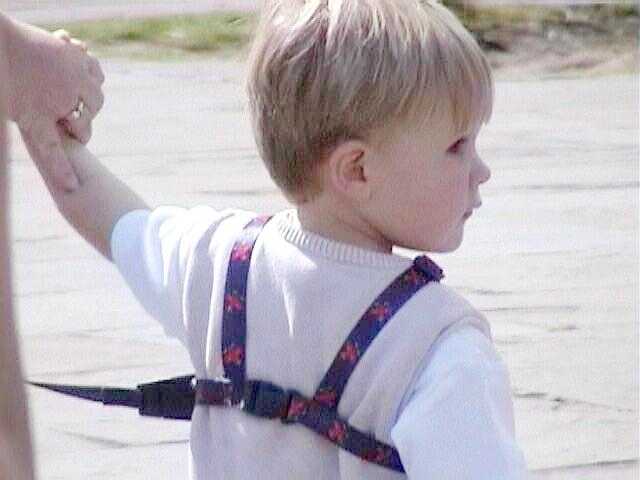
Figure 1.--The modern child saftey devces are commonly referred to as child walking harnnesses. They have steadily increased in popularity since the early 1990s


Figure 1.--The modern child saftey devces are commonly referred to as child walking harnnesses. They have steadily increased in popularity since the early 1990s |
Many parents, especially modern parents, object to the use of harnesses or resrtrining devices for children. The terms involved indeed convet ways of controlling or using animals, furtner disturbing some parents. The word "tether" is a word that has been used for centuries. It is generally a rope, chain or lead associated with lmiting the movement of animals. The phrase "at the end of one's tether", meaning at the limit of one's strength or patience, was being used in Middle English in the 14th century. The derivation may be from Old Norwegian, but there are similar words in Dutch and German. Harness is a related term, but it is a devise made up of straps and bands, normally of leather, designed attach draft animals to plows, waggons, and other devices. The word is derived from Old French. An archaic meeting is to put on one's armor. The primary meaning is the working gear of draft animals. Other reklated English words are leading strings, tether, leash, and lead. All those terms are from a same origin: horses and other animals exceot for leading strings which is more psychological, suggesting pull the
strings of a pupet ( tirer les ficelles in French ). Despite the fact that it is rather an inappropriate use of the word, the modern restraining devices for young children are commnly referred to as harnesses in America . I am not sure what term was used before the 20th century. We note a small difference between America and England. The conecting strap is called reins in Britain and a leash in America.
We are not sure of the foreign language words.
Many parents, especially modern parents, object to the use of harnesses or resrtrining devices for children. The terms involved indeed convet ways of controlling or using animals, furtner disturbing some parenys.
The word "tether" is a word that has been used for centuries. It is generally a rope, chain or lead associated with lmiting the movement of animals. The phrase "at the end of one's tether", meaning at the limit of one's strength or patience, was being used in Middle English in the 14th century. The derivation may be from Old Norwegian, but there are similar words in Dutch and German. This term is seldom used today, especially in conection with children.
Harness is a related term, but it is a devise made up of straps and bands, normally of leather, designed attach draft animals to plows, waggons, and other devices. The word harness originated from an old scandinavian term "hernest" meaning "everything usefull for the army". It was absorbed into French from the Norsemen and in the Middle Ages, the French cavalry which was prestigious throughout Euroope used that term to describe the complete soldier's uniform including the horse which was his property. So, at first, harness was applied to the
knights equipment. In French, the one who is fighting on a horse (= cheval) was called a "chevalier" fighting with his outfit. There is an expression which is sometimes used even today i both French and English. A older carreer soldier is described as putting on his harness (in French: blanchir sous le harnais). The word is derived from Old French.
It is just in the 17th Century that harness was applied to flexible pieces used as restraining and work devices for horses and other kinds of animals. The primary modern meaning is the working gear of draft animals. However unlike a tether which can be a simple lead, a harness might have waist and shoulder straps so as not to strain any one part of a draft animals body. Probably for this reason the term has been adopted for the modern children's walking device. It is probably why so much people are reluctant to use that term for babies and toddlers who are steady for walking. Other terms were used until the beginning of the 20th Century.
The term rein is defined as : "one or two straps attached to a briddle for guiding a horse". The plural reins means"straps fitted around a toddler so that he can be prevented from staying in the streets, etc. The child reins are attached to waist strap with clips on both sides.This term is commonly used today in England and Europe.
The term leash is defined as "a strip of leather or piece of chain attached to a collar around its neck by which a dog etc. is held". The child leash is attached to the waist strap by only one lead at rear. This term is commonly used in United States. The term lead is defined as " a leather strap or chain for leading a dog etc." It is seldom used with children.
Other related English words are leading strings, tether, leash, and lead. These and other related terms are from a same origin: horses and other animals except for leading strings which is more psychological, suggesting pull the strings of a pupet ( tirer les ficelles in French).
Reins, leash or lead are synonyms. They are derived from restraining devices used on domestic animals like horse or dog.
We are not sure of the foreign language words.
Kernerman, Lionel. Ed. Password: English Dictionary for Speakers of French (Montréal: Modulo. 2).
Rey, André. Ed. Dictionnaire historique de la langue française (Paris: Le Robert, 1992).
Navigate the Boys' Historical Clothing Web Site:
[Return to the Main children's harness page]
[Introduction]
[Activities]
[Biographies]
[Chronology]
[Cloth and textiles]
[Clothing styles]
[Countries]
[Topics]
[Bibliographies]
[Contributions]
[FAQs]
[Glossaries]
[Satellite sites]
[Tools]
[Boys' Clothing Home]
